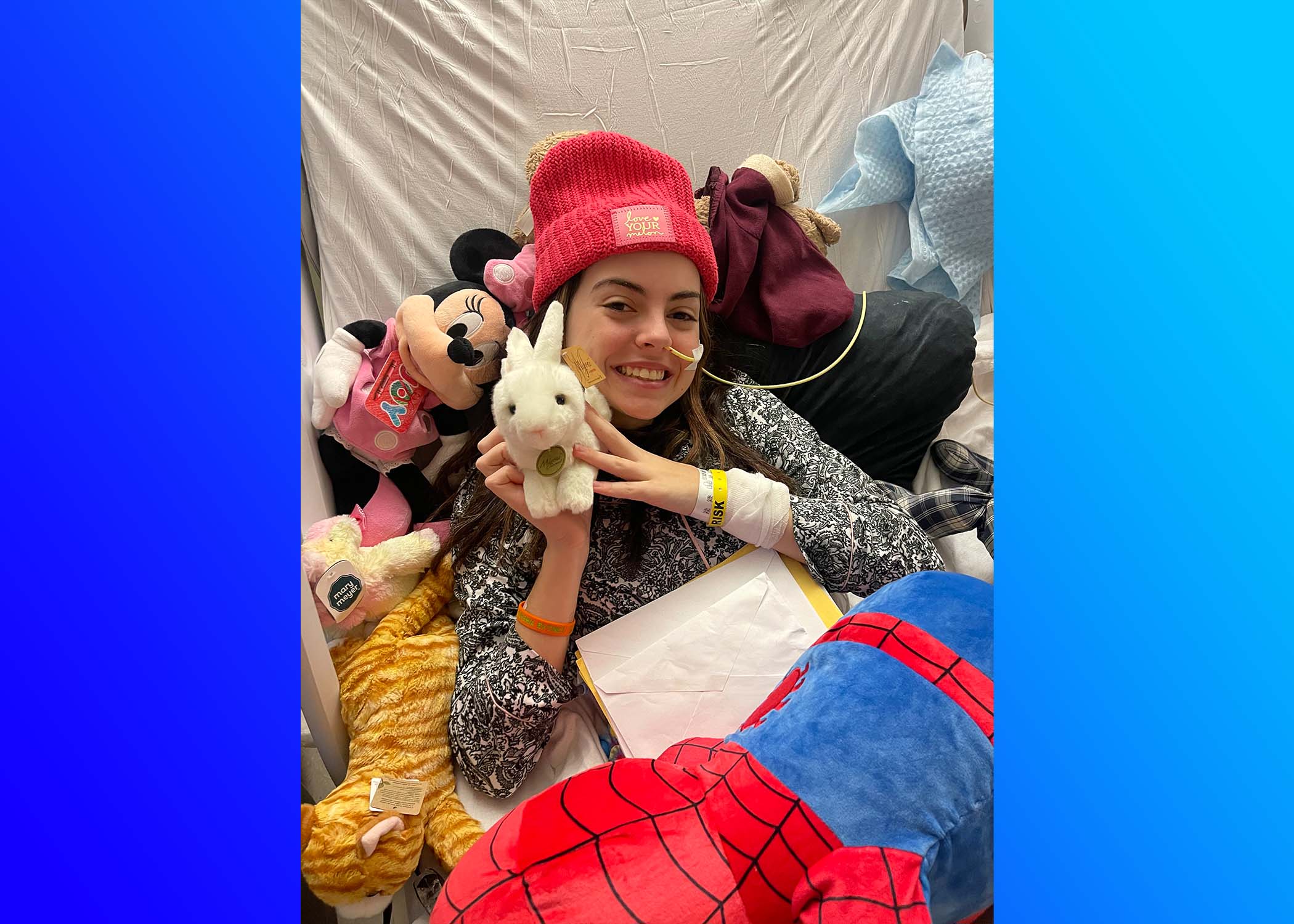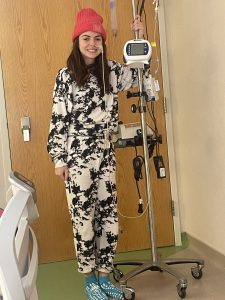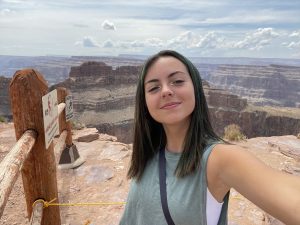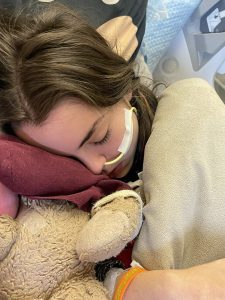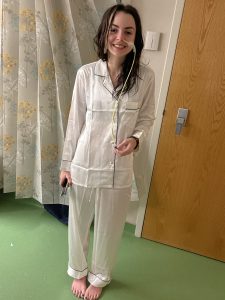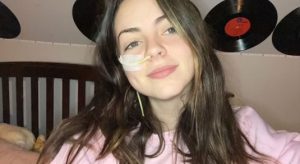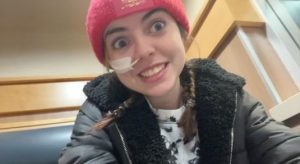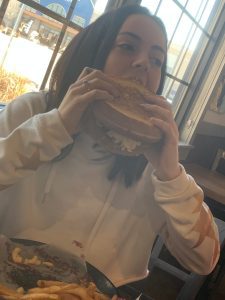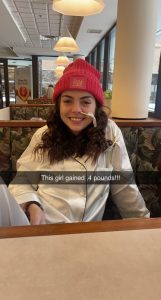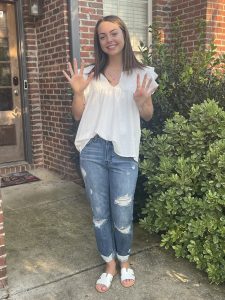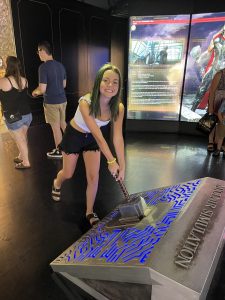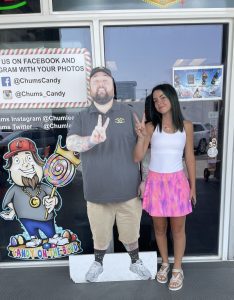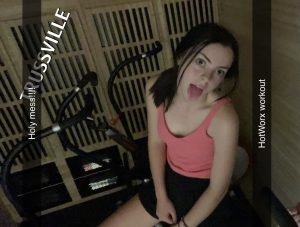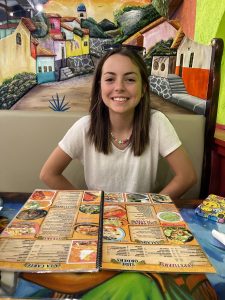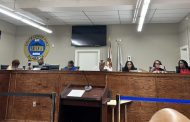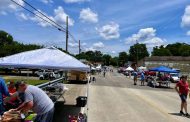By Hannah Curran, Staff Writer
TRUSSVILLE — A GoFundMe has been created to help a Hewitt-Trussville High Schooler raise money to pay for medical expenses.
The Mayers need to raise $47,000 to pay for medical expenses for their 15-year-old daughter Kaylyn Mayer to learn how to live her life to the fullest. Finally, after several extremely physically painful months for Kaylyn, her family could see the light at the end of the tunnel. They saw hope that would give Kaylyn the chance to be her normal teenager self again. However, their insurance provider wasn’t going to pay for the needed program for Kaylyn to heal.
A close family friend reached out and said she was going to create a GoFundMe to help the Mayers financially, and it is called “Helping Kaylyn Heal.” A Facebook page was also created for family and friends to encourage Kaylyn and stay up to date on her healing process.
So far, the account has raised $18,726 of the $47,000 needed for the program. Kaylyn said she gets emotional every time she looks at the GoFundMe page because she knows she has many people behind her supporting her.
“When I thank people for donating, they’re like, ‘Do not thank me; we know that you need,'” Kaylyn said. “This makes me feel good that they care about what’s going on with me because I struggled with friends before. So it just feels really good to know that I have all those people, and even if it’s like $10, everything counts.”
The $47,000 will cover the cost for treatment, but not the living expenses while Kaylyn is going through the program. The Mayers said every little donation counts toward making Kaylyn healthy again.
“We have to pay for housing, it’s an outpatient program, so we have to pay for housing while we’re going to be there,” Kaylyn said. “We don’t want to eat out every night so we want to buy groceries the $47,000 is for the program that’s what they tell you. That’s how much they tell you the program is it could be more but the $47,000 is just for the program we still have to pay for other things.”
Kaylyn was diagnosed with COVID-19 at the beginning of September. Kaylyn’s mother, Ashley Mayer, explained that Kaylyn experienced a “mild” version of the virus because “she had a headache and a cough, bounced back fairly quickly, she did the quarantine went back to school after 12 days with no side effects or any of that.”
However, her battle with COVID-19 was not over yet. On September 28, Ashley received a text from Kaylyn while at school, stating that she was not feeling well.
“She texted me and said, ‘I’m dizzy, really tired, I can’t keep my head up, and my stomach is hurting really bad,” Ashley said. “I said okay, so I went and got her. That night, she went straight to bed, and then she was 100 and almost 103 temperature.”
Startled by her daughter’s sudden illness, Ashley took Kaylyn to the doctor the following morning.
“I thought it was multiple different things,” Ashley said. “They tested her for mono, strep, they tested her again for COVID, and all of the tests came back negative. They went ahead and gave her a prescription for if she has an infection.”
Unfortunately, Kaylyn never got better, and after two weeks, Ashley took her daughter back to the doctor, but Kaylyn saw the family pediatrician this time. At this visit, the family was introduced to “Long-Haul COVID.” Long-Haul COVID is when a person has not fully recovered from COVID-19 weeks or even months after first experiencing symptoms.
“They told us to do some research and to watch her because there wasn’t really a whole lot to do for her,” Ashley said. “So that’s what we did.”
Kaylyn continued to get worse. She began losing weight because it was painful to eat, and due to the constant pain, Kaylyn couldn’t leave her bed. Kaylyn’s parents would rush her to the emergency room twice, being told both times that there was nothing they could do because the virus needed to run its course.
“After she got to the point of almost losing 18 pounds and pretty much stopped eating altogether, my husband and I, we were done,” Ashley said. “We couldn’t sit by and watch her anymore because this was a child who was very involved in everything at one time, she had a ton of friends, went everywhere, and now she’s doing absolutely nothing.”
Kaylyn was taken to several specialists at Children’s Hospital and other local specialists, and all of them gave different diagnoses. Ashley noticed that each diagnosis wasn’t fitting all of her symptoms, and the medication that was being prescribed never worked.
The Mayers began talking with Mayo Clinic, but they would have to sit in a waiting period before seeing a doctor. Finally, after three days of watching Kaylyn progressively get worse, they decided they couldn’t wait for an appointment; they packed their bags and flew to Rochester, Minnesota.
“We went to the emergency room,” Ashley said. “From the emergency room, they did some labs and whatnot and told us pretty much immediately they were going to admit her, and we were admitted on December 18.”
Kaylyn struggled physically and mentally because she did not know what was causing the pain or why she was the one experiencing it.
“Throughout this whole process, I’ve just been drained, really,” Kaylyn said. “It was hard in the beginning, not knowing what was wrong with me, and every day being sick, I started thinking, ‘why would it happen to me? Why do I have to be sick?”
After several evaluations and more tests, Kaylyn was diagnosed with Dysautonomia, Gastroparesis, and Postural Orthostatic Tachycardia Syndrome (POTS), which the Long-Haul COVID brought on.
POTS is a blood circulation disorder characterized by two factors: a specific group of symptoms that frequently occur when standing upright and a heart rate increase from horizontal to standing (or as tested on a tilt table) of at least 30 beats per minute in adults, or at least 40 beats per minute in adolescents, this is measured during the first 10 minutes of standing.
Dysautonomia is a dysfunction of the nerves that regulate nonvoluntary body functions, such as heart rate, blood pressure, and sweating. Gastroparesis is a condition that affects the stomach muscles and prevents proper stomach emptying.
Nothing was working as doctors desperately worked on healing Kaylyn; however, by December 28, Kaylyn had lost more weight. Doctors then decided that Kaylyn could no longer lose weight and decided to insert a Nasogastric (NG) Tube. Kaylyn now has three feedings a day and continues to take her medicine, but the medicine could take up to six weeks to begin working.
Before Kaylyn was discharged from the hospital, doctors recommended her to the Pain Rehabilitation Center (PRC) program, which is a program that will help and teach her how to live with Dysautonomia and POTS. This program is a 17-day program, Monday through Friday from 8 a.m. to 4 p.m.
“They do physical therapy, occupational therapy, she speaks with a psychiatrist and a therapist, they do music therapy, they educate how to live with dysautonomia, how to know what her triggers are to be able to work through those triggers, and just get her life back,” Ashley said. “When we learned about this program, every doctor that had seen her in the hospital was ‘Yes, absolutely, please do this.'”
After Ashley heard this, she knew this was exactly what her daughter needed to do to get back to her normal 15-year-old self. Kaylyn’s father, Andy Mayer, immediately called their insurance provider, Blue Cross Blue Shield (BCBS), to see if the program would be approved. BCBS informed them that BCBS would cover the program.
The Mayers told Mayo Clinic they were approved, and the Mayo Clinic reached out to finalize the approval, but BCBS then told the doctors they would not be covering the program.
Before Kaylyn could even begin the program, the Mayers would have to pay the entire $47,000.
“Of course, as parents, we were very upset, we cried, we were angry, and then we got focused and decided we’re gonna raise this money, we’re gonna figure out how to do this, and nothing is going to stop us,” Ashley said. “Our child’s life depends on it; however, we have to make the money, we have to get her there, and we’re going to get her there because she’s our top priority, and this is for her. So that’s where we’re at now.”
Kaylyn said that what motivates her every day is staying positive. Believing that she will be able to join the program and no longer be sick helps through her most challenging moments.
“I try to be positive about it, but it’s honestly super hard,” Kaylyn said. “It’s a chronic pain, and it’s all day. I’m so tired mentally and physically. I’m tired of being sick and tired of hurting, and I’m tired of not being able to eat. So It’s just exhausting mentally, and it’s a lot going on, especially now that we have to raise $47,000. It’s exhausting, and it’s because there’s so much going on, and I’m excited about the program, but I know I’m still going to be sick afterward. I’m just tired, but I’m going to get a bunch of help, and I’m excited.”
- (Photo courtesy of Ashley Mayer)
- (Photo courtesy of Ashley Mayer)
- (Photo courtesy of Ashley Mayer)
- (Photo courtesy of Ashley Mayer)
- (Photo courtesy of Ashley Mayer)
- (Photo courtesy of Ashley Mayer)
- (Photo courtesy of Ashley Mayer)
- (Photo courtesy of Ashley Mayer)
- (Photo courtesy of Ashley Mayer)
- (Photo courtesy of Ashley Mayer)
- (Photo courtesy of Ashley Mayer)
- (Photo courtesy of Ashley Mayer)
- (Photo courtesy of Ashley Mayer)
- (Photo courtesy of Ashley Mayer)
- (Photo courtesy of Ashley Mayer)



